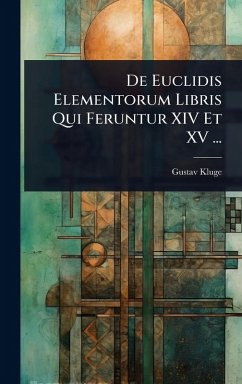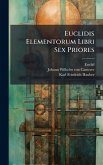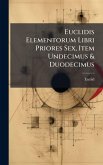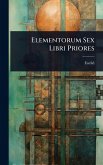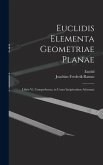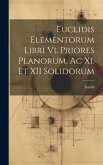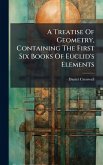De Euclidis Elementorum Libris Qui Feruntur XIV Et XV, written by Gustav Kluge and published in 1891, presents an in-depth study of the supplementary books often attributed to Euclid's Elements. This work delves into the mathematical principles and geometrical concepts outlined in these additional books, providing a detailed analysis suitable for scholars and students of mathematics. The book is presented in French. Kluge's examination offers valuable insights into the historical development and interpretation of Euclidean geometry, making it an essential resource for understanding the broader context of classical mathematical thought. This historical text remains relevant for those studying the foundations of mathematics and its enduring influence on modern scientific disciplines. This work has been selected by scholars as being culturally important, and is part of the knowledge base of civilization as we know it. This work was reproduced from the original artifact, and remains as true to the original work as possible. Therefore, you will see the original copyright references, library stamps (as most of these works have been housed in our most important libraries around the world), and other notations in the work. This work is in the public domain in the United States of America, and possibly other nations. Within the United States, you may freely copy and distribute this work, as no entity (individual or corporate) has a copyright on the body of the work. As a reproduction of a historical artifact, this work may contain missing or blurred pages, poor pictures, errant marks, etc. Scholars believe, and we concur, that this work is important enough to be preserved, reproduced, and made generally available to the public. We appreciate your support of the preservation process, and thank you for being an important part of keeping this knowledge alive and relevant.
Bitte wählen Sie Ihr Anliegen aus.
Rechnungen
Retourenschein anfordern
Bestellstatus
Storno

